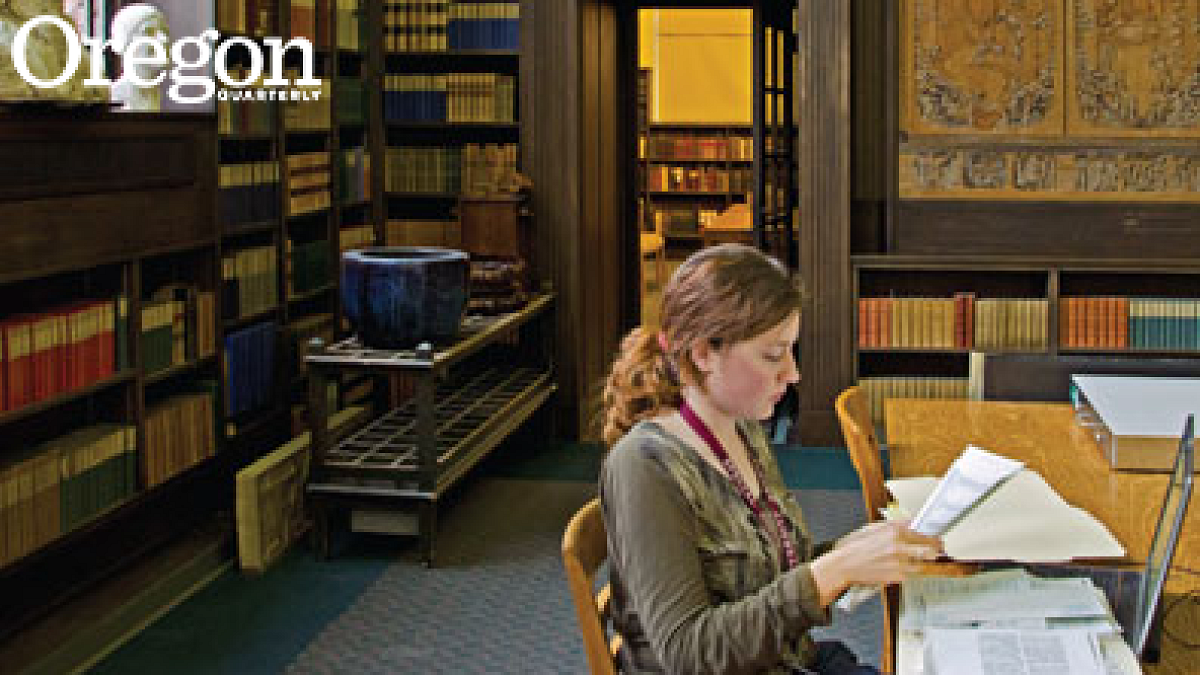It's how a library should smell—of books, dust, and old literature. Special Collections and University Archives at Knight Library is a largely unknown pocket of history located at the University of Oregon. Here, tens of thousands of documents and other items reside, collected from the university itself as well as from the Northwest and beyond; gathered, cataloged, and held for the curious historian or student wanting to take a journey back in time.
Students, faculty members, and the public access the archive, located on the library's second floor, through the book-lined, high-ceilinged Paulson Reading Room. In this academic sanctuary, silent researchers work with pieces retrieved from the collections amid Depression-era wall carvings, antique busts, and the light from exceptionally tall windows overlooking the Memorial Quadrangle.
The archives and special collections holdings are secured behind a code-locked door—off-limits to the public. But, as a student archivist, I've spent hundreds of hours behind the scenes, organizing the university's treasures. Four years of working here has made these little-known rooms a familiar maze to me.
The collections are housed on six floors of cramped but functional space reached from a single staircase barely a yard wide. Thousands of white cardboard boxes line dark, temperature-controlled aisles. Papers and documents of all kinds are stacked neatly on narrow shelves. At every turn there is something amazing: here are original manuscripts and diaries from Ken Kesey, the papers of James Ivory and Ursula Le Guin; over there, paintings and sketches from famed Northwest artist Morris Graves.
I pull out a dusty box and get to work. Wearing white cotton gloves, I delicately handle newspapers detailing a shipwreck and presidential elections, slipping century-old, ink-stained pages into acid-free folders. I see postcards to President Woodrow Wilson, urging him to give women the right to vote. I hold in my hand letters sent by a Civil War major to his family from an 1864 battlefield. I lose myself. In the course of one short, five-hour shift I might live in the impassioned arguments for civil rights from the 1800s, dive into Nancy Ryles's 1981 campaign to the Oregon Senate, or be transported much further back in time, to the medieval period, peering at a hand-lettered Latin manuscript with 24-karat gold leaf details.
Deep within these walls, I lose cell phone reception, but gain access to centuries of thought and work from people I'll never meet. The collections are vast and seem never-ending, and as one collection is organized and put back upon its shelf, another is removed, bringing with it one more chunk of time for me to put in order.
—By Sydney Bouchat
Sydney Bouchat, shown above, is a senior majoring in journalism and minoring in Japanese.


